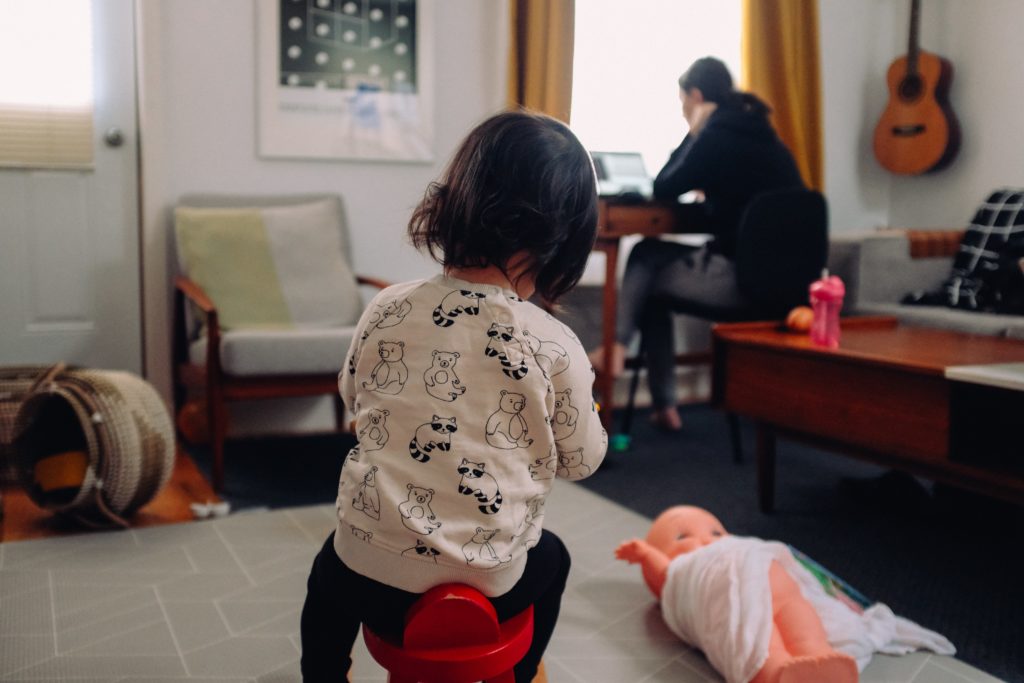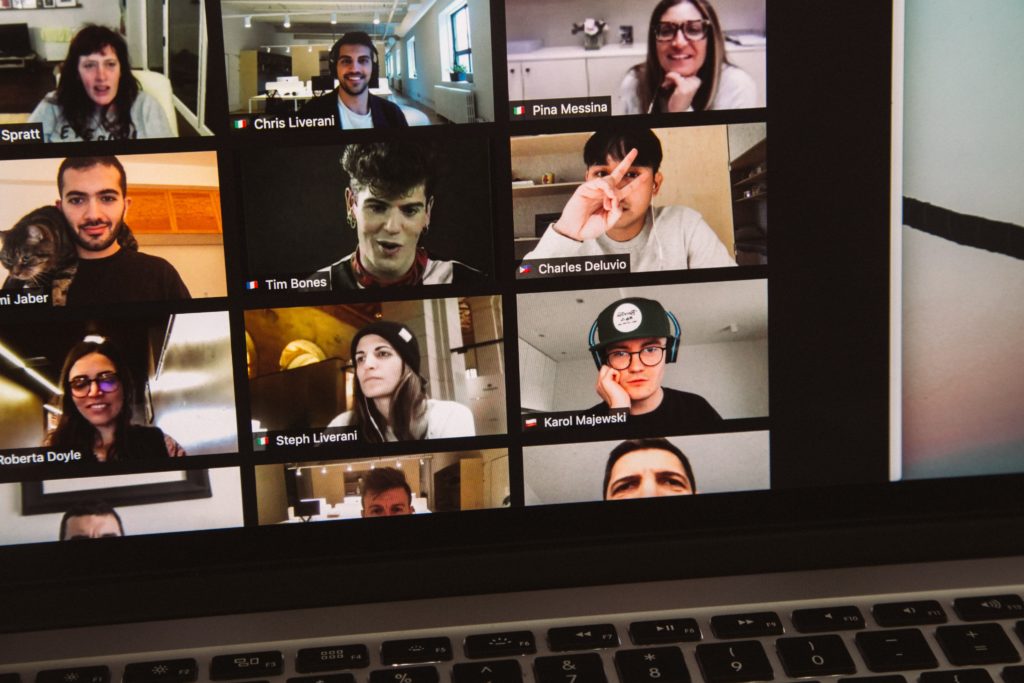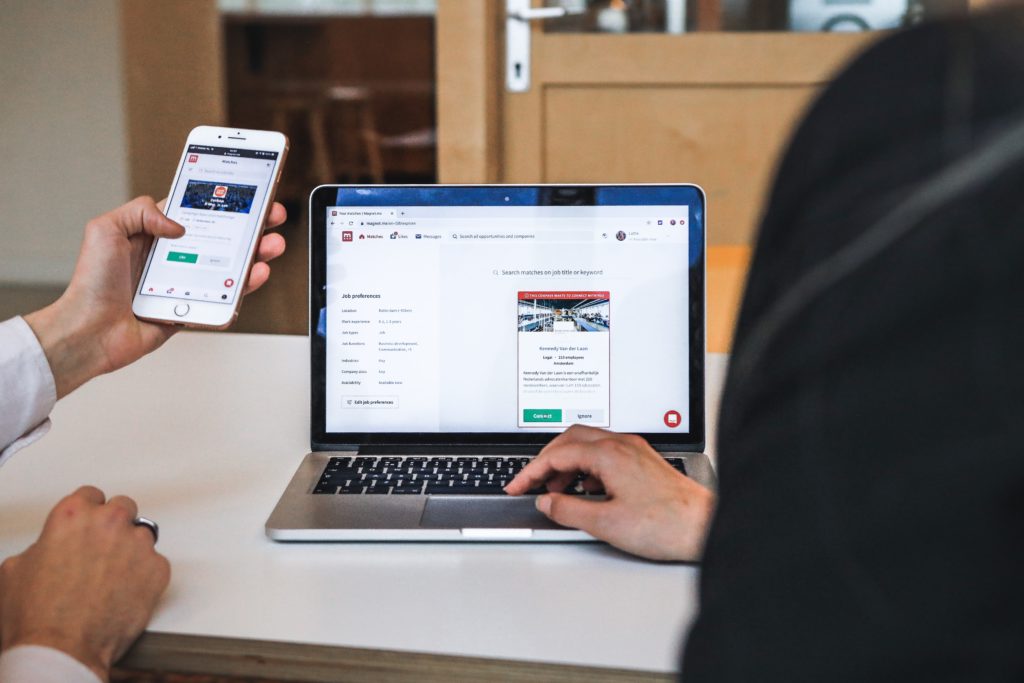We talk a lot about the importance of storytelling in internal communications. They strengthen your message, capture the imagination, and allow your audience to understand the essence of your narrative. But what stories are we supposed to be telling?
Experiencing a world-changing year has undoubtedly created its own tales, and the way your organization has navigated the pandemic has provided the perfect fodder for storytelling comms for years to come. In the most difficult of circumstances, we’ve learned, developed, and grown, as people, employees, and peers.
This period has carried a lot of lessons. We now have first-hand experience of our employees’ resilience, our adaptability, and our collective need to solve problems. As we look back to reflect what has and hasn’t worked, we see a space in time rich in stories – to learn from and share with others.
Why tell stories?

The power of storytelling has been well-documented. It’s a proven fact that we will make decisions based on our emotions. Biologically, stimuli triggered by emotion can create faster decision making than conscious cognitive processes. Storytelling provides the emotional hook to a message, making it more compelling to the audience. When we are given an example of how an idea or theory works via a story, we can see the sequence of events that lead to the conclusion. The concept becomes more comprehensive and, therefore, more digestible: we can quickly work out why a + b = c.
In order to be understood by a wide range of employees, internal communications must involve some element of storytelling. There are a number of benefits to using this technique in comms.
Storytelling captures attention: Stories hook people in by engaging their emotions. Say, for example, you’re shopping for hand cream. There are two products on sale. One is a basic drugstore product and does the job fine. The other has been developed during COVID-19 to protect the hands of medical staff who need to wash their hands continuously throughout the day. Which one do you go for? The latter has more impact – it carries a story that appeals to the heart, and of course, to the consumer: if medical staff are using this product to protect their hands, it must be good.
It increases understanding: Graphs and bar charts are great for mapping data, but if you’re presenting your department’s performance over the past twelve months, you need to be able to enable your audience to make sense of the information. A case in point is the ‘Flatten the Curve’ graph released at the beginning of the pandemic, which showed how social distancing and regular handwashing could reduce the burden on healthcare systems.
A familiar scenario to demonstrate storytelling with data is the measuring of employee engagement. On your data, you can see a spike in intranet activity in March, and the trend continues for several months. The story behind this could be that it marks the move to at-home working. So, people facing a lifechanging event leaned on their organizations for news, info, and support even more than usual. Employees were using online tools to connect more to their business than ever before – and the data from this year provides the hypothesis that remote working could increase engagement, rather than the opposite.
It’s shareable – Data on its own doesn’t have a very ‘shareable’ quality, and often remains on the page. Conveying the information through a story allows it to be shared easily across the organization. This underpins the whole idea of knowledge-sharing. Businesses need to be able to spread good ideas that are factually correct, and embedding them into a compelling story is an effective way of doing this.
Helps employees understand experiences: How often have you listened to a speaker whose unique experience reminds you of your own? When they speak about how they triumphed after experiencing great failure, it might remind you of that moment when a negative episode in your life actually put you on the tracks to the career you are in now. These moments are extremely valuable. Not only do they allow the audience to tune into the message of your story, but they also tie in the same lesson to their own experiences – making their understanding even more profound.
Fulfills an emotional need: There are some tasks where you will battle to get your employees’ attention, such as an annual employee survey. Getting people to fill out these surveys is essential, but workers will put off giving feedback if their to-do list is growing by the day. It’s up to the internal communications department to underline the importance of what filling in the questions can do to strengthen the business. If you’re looking to engage your workforce in the annual survey, outline the benefits.
With their honest answers, you’re able to shape the business around them, improving their working lives, making necessary change, and learning from lessons of the past. The employees are put in the driving seat and are able to dictate what is and isn’t working in the organization. This level of responsibility, trust, and respect fulfills a huge emotional need in many employees who will feel empowered by giving their point of view.
So, what stories can we tell from our experiences during the pandemic?

As it’s something we’ve never experienced before, there will be many stories and lessons we can take away from this period: the successes, the failures, the discoveries, and the losses. If we’re to grow as people and as an organization, it’s essential to focus on the positive: even in the worst scenarios, we can glean something constructive from the most challenging experience.
People are a lot more adaptable than you think

A year ago, the idea of en masse remote working would have seemed laughable. While employees yearned for more flexibility, organizations preferred their workforce to remain in the traditional office workspace. Here is where people could get together, communicate better, innovate, and learn in a setting designed for hard work and enterprise. Allow your workforce to work from home would result in a logistical nightmare – and perhaps one that some companies feared they could never recover from.
In reality, the great working from home ‘experiment’ was, by and large, a great success. People worked out ways of making it work, setting up makeshift desks, switching from desktop to laptop, and finding new ways of communicating and collaborating with their peers with the technology available. The result has seen home working regarded with far less distrust than before. Employees have shown that when they are given responsibility, they can repay this confidence back fully.
A strong team culture should be nurtured

For many individuals, it is their teams and colleagues who have helped them get through the more difficult moments of lockdown. Having daily chats has allowed people to share their thoughts and feelings, if not as a group, with a colleague during a confidential chat. It has been a challenging period for those living alone, managing work with looking after children, or living in a house share. By talking through problems with a peer, it eases the burden but also strengthens a working relationship and workplace culture.
Knowing the issues our colleagues have faced has provided us with a deeper understanding of the people we work with. With this knowledge, we are able to find ways to help them, support them, and work through any problems that may arise. And we’ve seen benefits in virtual teamwork outside of emotional support. With all members working from home, communication is more focused, more level, with each person having equal billing to the next.
In a crisis, it’s all hands on deck

Cast your mind back to those uneasy, fearful days of March, when news changed from hour to hour. Away from government pressers and urgent calls to family members, we saw our communities come together in the most profound ways. Seemingly overnight, groups were assembled to help more vulnerable residents; new food banks were formed to distribute to those in need; people shared contact details with neighbors and offered assistance in picking up meds or groceries.
We are told that as a race we are fundamentally selfish, but the behaviors exhibited during a time of great need show that we have focused on the safety of others and not just ourselves. Similarly, employees realized that their businesses were facing an uncertain future. With the arrival of this sudden threat, they worked solidly to help their organizations through, putting in longer hours (according to analysis from NordVPN), supporting colleagues, and working more closely as a team.
Organizations need to put more trust in their people

The subject of employees working from home has been hotly debated for many years. What if productivity goes down? What if communication suffers? What if the tradition of sharing ideas and knowledge among peers is no longer tenable? Most organizations have erred on the side of caution and flatly refused the remote working option, in favor of the ‘being seen’ nature of the office. The problem is, most organizations haven’t trialed remote working and haven’t looked for benefits or ways of making it work for both employee and business. For organizations continually looking at ways to innovate, the play-it-safe approach contradicts these ambitions.
However, months of remote working have shown the many benefits of allowing people to work from home. Employees are happier, having more time to spend with loved ones or on hobbies, without the struggle of the commute or the logistics of fulfilling work duties with school runs and domestic affairs. People are just as busy – but there is less stress involved in the beginning and end of the working day. On top of this, without the physical proximity, teams are communicating better and working more closely. While many miss the office life’s formal structure, organizations could perhaps learn from this lesson and feel more confident in providing more flexibility to employees going forwards.
We can problem-solve

The issues arising in organizations during the pandemic were in abundance. From the mental well-being of staff to logistical problems with phone lines and laptops. Departments went into overdrive to make the move to working from home as seamless as possible. After all, there was little choice. The restrictions issued meant we had to make it work. And, overall, for those businesses not directly impacted by lockdown, it did work.
Day-to-day working from home showed us what gaps need working on. Colleagues who worked closely with each other learned how to close the distance with the array of communication tools at hand. Organizations realized the importance of coming together for regular online chats, so workers could raise questions or find out how other departments were getting on. Employees found ways to address problems without the benefit of having a physical one-to-one with a peer in an office setting.
The office still has many benefits, but when enforced remote working was the only option, we soon found workarounds and solutions to problems that arose from these new circumstances.
What these stories can teach us

So, what do all these lessons and stories mean for our organizations? Above everything, they prove that big change can happen if we allow it. When it comes to flexible working, taking risks, trialing new ways of working, listening to the needs of our workforce – we have all the tools, tech, and capabilities for making it happen. Change is something that shouldn’t have to be forced, but something that should be welcomed.
The shared experience of living through the pandemic has bolstered professional relationships. Despite the distance, we’re possibly communicating better than we ever have done. And the more time we’re spending together with our colleagues, albeit on Zoom or Microsoft Teams, the more easily we can recognize each other’s unique abilities and natural strengths.
Combining data from our CRM systems, our intranets, and analytics with storytelling can be a powerful tool to effect change in policy and attitudes. The data acts as the proof, and the way it is conveyed – the story – is what engages the gut, the heart, and the brain.
Using these stories, and the many others that have come out of the past year, we are able to enrich our communications. In adversity, we have discovered many great traits and skills within our workforce. Reminding our employees how resilient and enterprising they are can help keep the momentum as we navigate the uncertain future ahead.


